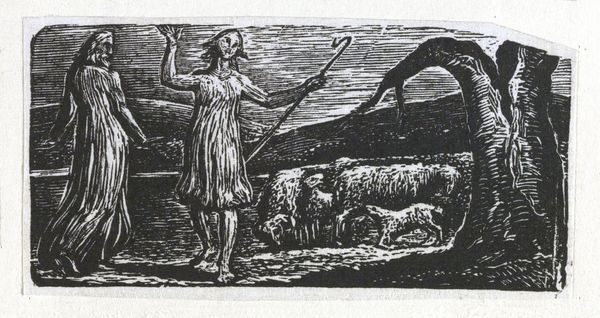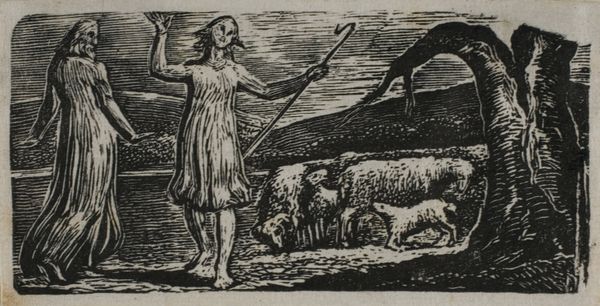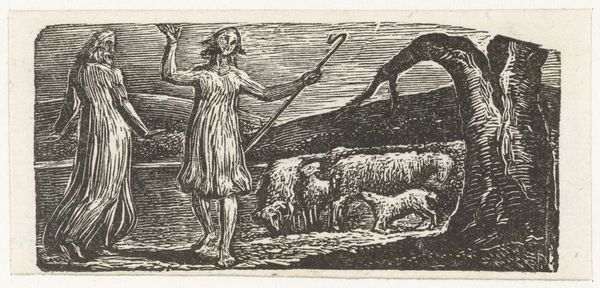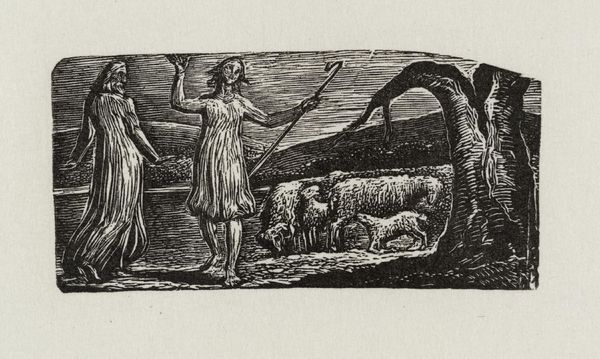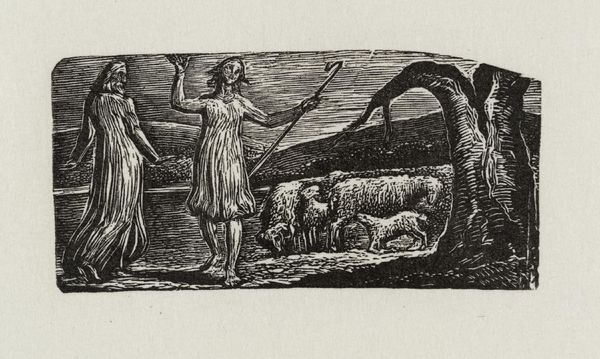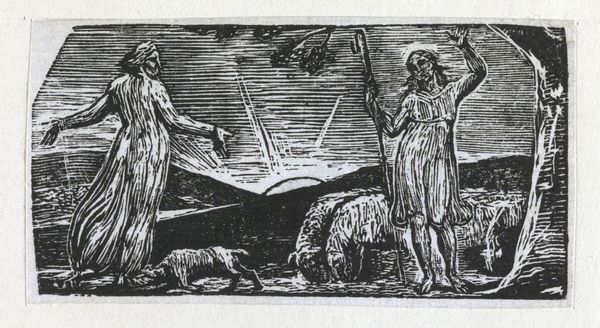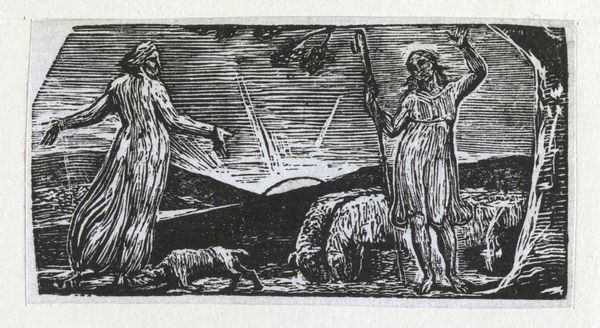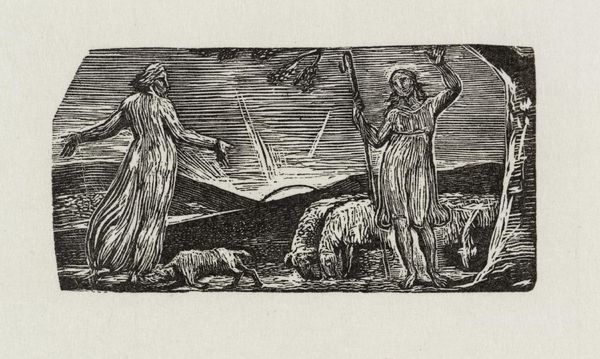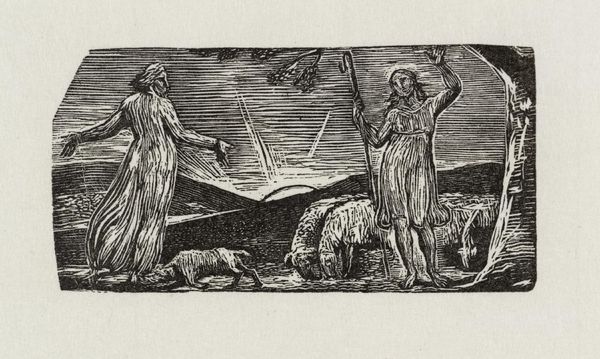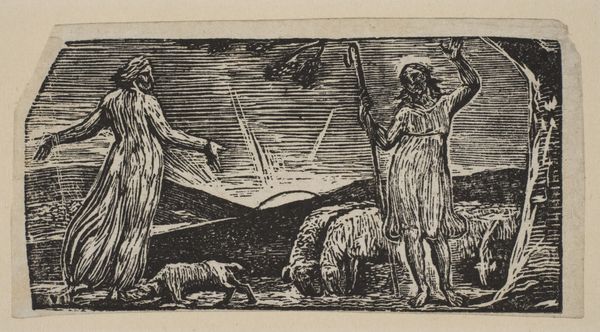
Dimensions: image: 36 x 73 mm
Copyright: NaN
Editor: This is William Blake’s engraving, "Thenot, with Colinet Waving his Arms in Sorrow." The stark contrast really establishes a somber mood. What strikes you about its composition? Curator: The density of line is certainly notable, isn't it? Observe how Blake uses the sheer volume of hatching to create depth, particularly within the landscape and the figures themselves. Editor: The figures seem very elongated, almost ethereal. Is there a reason for that? Curator: Consider how the verticality of the lines contributes to that effect. The lines elongate the forms, creating a sense of otherworldly grief. It invites a structural reading—the contrast between light and shadow shapes our emotional response. What is your interpretation? Editor: I see the forms and lines creating a sense of deep sorrow. It is a very emotionally evocative composition. Curator: Precisely. The formal elements construct the emotional core of the piece.
Comments
tate 7 months ago
⋮
http://www.tate.org.uk/art/artworks/blake-thenot-with-colinet-waving-his-arms-in-sorrow-a00115
Join the conversation
Join millions of artists and users on Artera today and experience the ultimate creative platform.
tate 7 months ago
⋮
Samuel Palmer was the most important of Blake’s followers, known as the Ancients. Palmer first met Blake in 1824. He described these illustrations to an imitation of the First Eclogue by the Roman poet Virgil as ‘visions of little dells, and nooks, and corners of Paradise’. Palmer’s art was particularly influenced by them. These prints appealed to the Ancients because they were the result of Blake’s experiments with a new medium; he had never engraved on wood before. Even at the age of sixty-four he wanted to make further explorations in his art. Gallery label, August 2004
